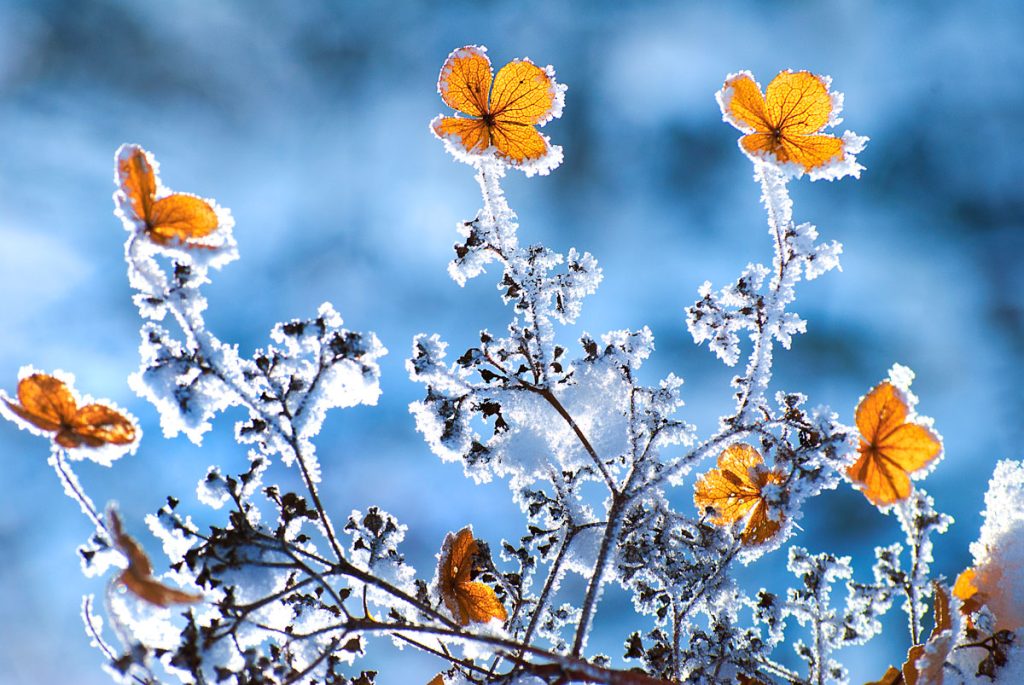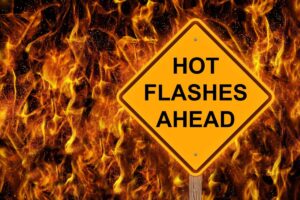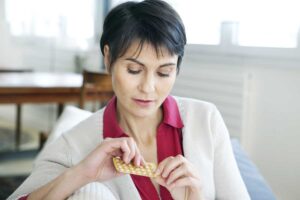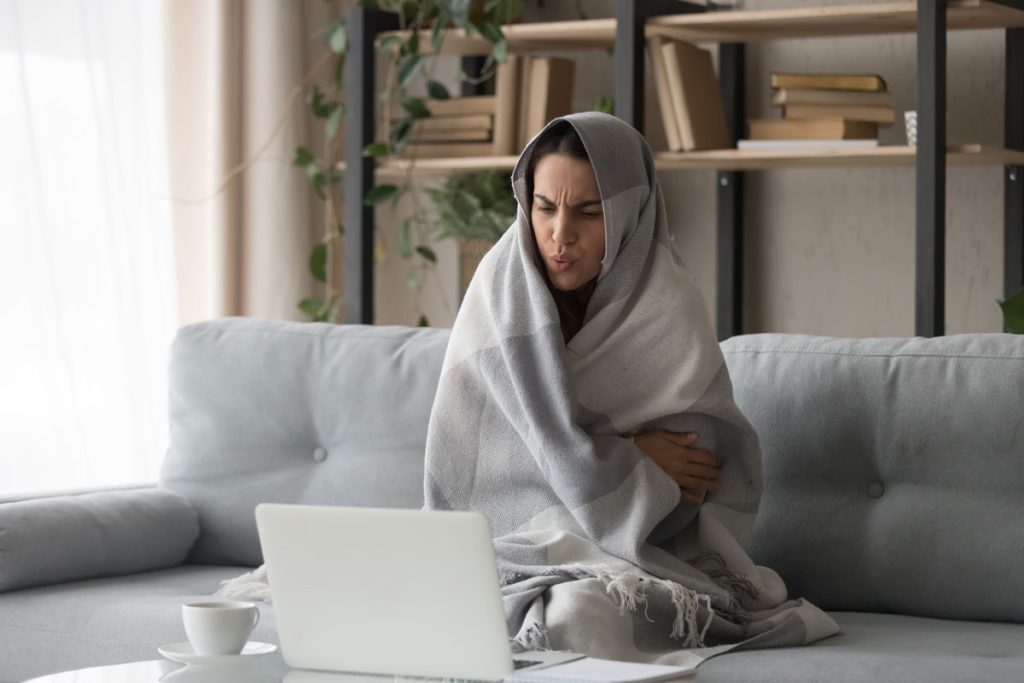Have you ever had a cold flash? That’s right; we said cold flash! They’re a thing for menopausal women but can also indicate other health conditions. Like hot flashes, cold flashes can be overwhelming for a woman, especially in combination with other symptoms. If you’re suffering from cold flashes, try these 10 ways to beat the chill to reduce the severity of menopause-related cold flashes or even potentially eliminate them. Don’t worry; we won’t warm you up too much, as hot flashes and cold flashes can happen one after the other.
What is a cold flash?
Cold flashes come on suddenly and don’t last long. As the name suggests, you suddenly feel cold!
Fluctuating hormones during menopause can cause cold flashes, but other health conditions can cause them too.
Women can have cold flashes at night or during the day. If they happen at night, they can exacerbate sleeplessness, which can already be difficult for women during the menopause transition.
What are the symptoms of a cold flash?
When describing cold flash symptoms, women mention:
- Tingling
- Shivers
- Chills
- Paleness
- Sudden cold feelings throughout the body.
- Body aches
Women say those chills and body aches feel “different” than getting chills and body aches when they’re sick.
These symptoms can happen on their own or with a hot flash.
Can you have hot and cold flashes?
Yes, you can have hot and cold flashes and chills. Sometimes women experience the two types of flashes close together. As the hot flash begins to fade or goes away, a cold chill and/or cold sweat can replace it.
Fluctuating hormones during perimenopause and menopause can impact the hypothalamus, the part of the brain that regulates body temperature.
As a result, a woman’s body can overheat (e.g., hot flash and night sweats) or get super cold (e.g., cold flash).
While night sweats are commonly referred to as a hot flash, night sweats are actually a way for the body to cool itself down after a hot flash.
What’s the difference between hot and cold flashes?
Hot and cold flashes feel entirely different.
When having a hot flash, women+ say they feel intense periods of heat, mostly in their face and chest. Hormone fluctuations cause hot flashes, but food can also exacerbate a hot flash. Cold flashes are typically felt throughout the body.
Up to 80% of women experience hot flashes to some degree during the menopause journey, but cold flashes are a less common symptom.
And cold flashes are less understood.
Are cold sweats a sign of menopause?
Cold flashes aren’t always a sign of the menopause transition. There are other reasons you may experience them.
While cold flashes can be associated with the hormonal changes that come with the menopause journey, they can also be caused by other hormonal changes like thyroid dysfunction or emotional distress, such as panic or anxiety attacks. Poor blood circulation, anemia, and low blood sugar can also cause cold flashes.
Cold flashes, however, may be a sign of perimenopause or menopause, particularly if you are also experiencing any or all of the dozens of symptoms affecting women going through the transition, like:
- menstrual cycle changes, e.g., heavier bleeding, changes in how long your period lasts, or the frequency of your periods
- irritability and mood swings
- restless legs or other leg pain
- fatigue
- weight gain
- vaginal dryness
- thinning hair
- new, stronger, or different body odor

10 ways to decrease menopause cold chills
Always talk to your doctor about your menopause symptoms. Find a healthcare practitioner who will listen and develop a plan to determine the root cause of the cold flashes.
If you don’t feel your doctor is taking your menopause symptoms seriously or only recommends hormone therapy (HT) as a treatment solution, search for one who specializes in menopause.
Some doctors don’t have adequate training in menopause. So, it’s best to find a practitioner with specific expertise and a focus on menopause if there is one available in your area.
Some of the best tools for managing cold flashes include many of the same techniques you can use to manage overall menopause symptoms. It often comes down to doing those things that help you create and maintain a healthy lifestyle.
Here are a few easy shifts you can discuss with your doctor to decrease your menopause-related cold flashes.
1. Think about black cohosh.
Black cohosh is one of many herbs that can help with several symptoms experienced during the menopause journey – general aches and pains, abdominal cramps associated with changes in the menstrual cycle, and low mood.
While some studies indicate that black cohosh does not help with hot flashes, other researchers have found it can reduce their number and severity. By extension, it, therefore, could indirectly help with cold flashes. The jury is still out, with no clear consensus in the scientific and medical communities.
As always, check with your healthcare practitioner to identify any reasons you should not use black cohosh based on your particular circumstances. And then, make sure the preparation you select is high quality, free of contaminants, and of sufficient potency to be effective without causing potential issues like liver failure.
Look for a brand that uses organic black cohosh and has been independently verified by a third party like U.S. Pharmacopeia, NSF International, or ConsumerLab.
You may also want to consider working with an experienced herbal medicine practitioner with training at a reputable school. There is no mandatory national licensing or certification system for herbalists, although there may be specific practice requirements from state to state. Therefore, an additional safeguard you can take is to check with your state medical board to see if there have been any documented complaints or lawsuits.
2. Consider a wearable device.
Have you ever noticed if you’re hot under the covers and stick a foot out from underneath, the rest of your body becomes cooler too?
There is technology, often designed to look like a bracelet or watch, which can sense that a hot flash or cold flash is on the way and then cools or warms the skin of the inner wrist to prevent flashing.
Some devices can address both hot and cold flashes, while others work for one type or the other.
Current options include Thermaband and Embr Wave.
3. Avoid caffeine and alcohol.
Avoid caffeine and alcohol. Both can play a role in disrupting your body’s ability to regulate your core temperature.
Alcohol and caffeine are also hot flash triggers. If you find they are among your triggers, you want to avoid these – since anything that triggers a hot flash can often trigger a cold flash – like sugar, alcohol, and spicy food.
These beverages can also make it harder to fall asleep or get a good night’s sleep, which is another menopause symptom.
4. Change your eating habits for menopause symptoms.
Eat a balanced diet, with foods that can improve menopause symptoms rather than cause symptoms like spicy food.
Include plenty of fresh fruits, green leafy vegetables, lean protein, whole grains, nuts, and seeds.
Healthy eating will also help with weight loss/management, which is important for many reasons, including the link between obesity and a greater risk of hot flashes during menopause.
5. Start an exercise routine to help cold symptoms.
Add regular exercise to your routine – including weight-bearing, strength training, and both balance and aerobic exercises. Physical activity has been shown to reduce hot flashes. And since cold flashes can follow a hot flash, reducing one can lead to fewer of the other.
As a bonus, exercise can keep your body and mind active and help reduce stress and anxiety. This is important since women in perimenopause are more prone to anxiety.
Exercises targeted for menopausal women will also help with other menopause symptoms like weight gain and health risks like osteoporosis.
As always, check with your doctor. You want to ensure your exercise plan takes your health status, including underlying conditions like heart disease, medications, and your medical history, is one that will be safe for you. And if you have been sedentary, it is even more crucial. When doing a “healthy habits reboot,” it can be tempting to jump right in and overdo it in an attempt to get fast results. However, trying to go from couch potato to Olympic athlete in no time flat is not a good idea and may lead to injuries or a dangerous, acute health event.
6. Stop smoking and vaping.
If you haven’t already, now would be the perfect time to address a nicotine habit, including regular cigarette smoking and vaping. Nicotine can also make your body temperature regulation irregular.
7. Reduce your stress.
Let’s face it. Cold flashes can be stressful. Especially at work, where there may not be awareness or education regarding the menopause journey, colleagues may look at you oddly if you’re suddenly cold for an unexplained reason on a regular basis.
Even a few minutes a day of mind-body practices like meditation, yoga, guided imagery, etc., can quiet your mind, reduce anxiety, and decrease stress whether the stress is from an external factor or the cold flash itself. Try these self-care strategies to reduce stress.
8. Try non-hormonal techniques,
There are dozens of non-hormonal options for managing menopause symptoms. Many of them work with hot flashes and can help with cold ones as well.
One of the non-hormonal techniques builds upon the stress reduction approaches above.
Focusing on the connection between your mind and body, with meditation and hypnotherapy, has also been shown to help decrease hot flashes, which could potentially help with cold flashes.
9. Speak with your healthcare provider about non-hormonal medications.
The only non-hormonal drug approved by the U.S. Food and Drug Administration (FDA) to treat hot flashes is paroxetine, which was originally used to treat depression. It has been shown to decrease hot flashes significantly and, therefore, can also potentially decrease cold flashes.
Other non-hormonal prescription medications, which in this circumstance would be used “off-label” (i.e., prescribed for an issue other than that for which the drug was developed and approved by the FDA), can also help reduce cold flashes are:
- gabapentin, an anti-seizure medication
- clonidine, used to treat hypertension
- oxybutynin, prescribed for overactive bladder syndrome.
These three medications act on the neurotransmitters (chemical messengers that occur naturally in your body) involved in the hypothalamus, the region of the brain involved in triggering a hot flash and regulating body temperature.
10. Consider hormone therapy (HT).
If you and your healthcare professional have decided that hormone therapy (HT) is the right choice to address hot flashes, HT could potentially decrease your cold flashes indirectly because of its ability to reduce hot flashes and night sweats.

Things to try during a cold flash
While you may be able to decrease the severity of cold flashes, you may not be able to eliminate them.
So, what can you do when one hits? There are a few things to try when you have a cold flash that can possibly help how you feel in the moment, including:
Breathe through the cold flash.
Try to center and calm yourself. Take a few deep breaths and relax. Tell yourself that this, too, shall pass. You’ve gotten through previous cold flashes and will conquer this one too!
Wear layers during the day and at night to help moderate your temperature in every setting.
Have a jacket or scarf available when you feel a cold flash on its way. And try sleeping with socks on. Just like sticking your foot out from under the covers can cool you off, putting socks on can help heat you up.
A blanket, socks, or a sweater will help you feel warmer.
Change your clothes and/or bedding.
If the cold flash starts after a series of hot flashes or night sweats and your clothes are wet, changing your clothes can help prevent a cold flash. So, try changing your bedding. It will also reduce the likelihood of developing body odor.
Be prepared to minimize the amount of time your sleep may be disturbed at night. Have sheets near your bed so you can get back to sleep faster.
Have a warm drink.
A hot beverage such as tea or warm milk can help warm you when you feel cold.
If you’re prone to a hot flash and then a cold flash, drink ice water when you feel the hot flash coming on to help head it off. However, if you’re in the middle of a hot flash, notice if ice water makes the cold flash worse or if it doesn’t have much of an impact.
Move around.
Do some gentle exercise or walk outside, assuming the weather is not hot and humid. Move around to raise your body temperature and calm your mind.

You don’t have to suffer with cold flashes
Just because you’re experiencing cold flashes, hot flashes, and other symptoms of menopause doesn’t mean you’re stuck with them.
Remember, you have options. And often, lifestyle changes, over which you do have some control, are among the best ways to manage how you feel during this transition in life.
Don’t suffer in silence!
What have you found to be most helpful in managing cold flashes?
Perimenopause | Mayo Clinic
Hypothalamus | Cleveland Clinic
Avis NE, Crawford SL, Green R. Vasomotor Symptoms Across the Menopause Transition: Differences Among Women. Obstet Gynecol Clin North Am. 2018 Dec;45(4):629-640. doi: 10.1016/j.ogc.2018.07.005. Epub 2018 Oct 25. PMID: 30401547; PMCID: PMC6226273.
Find a Menopause Practitioner | The Menopause Society
Mehrpooya M, Rabiee S, Larki-Harchegani A, Fallahian AM, Moradi A, Ataei S, Javad MT. A comparative study on the effect of “black cohosh” and “evening primrose oil” on menopausal hot flashes. J Educ Health Promot. 2018 Mar 1;7:36. doi: 10.4103/jehp.jehp_81_17. PMID: 29619387; PMCID: PMC5868221.
Natural hot flash relief | Thermaband
Immediate hot flash relief | Embr Wave
Information for Consumers on Using Dietary Supplements | Food and Drug Administration
NCCAOM® Find a Practitioner Directory | National Certification Commission for Acupuncture and Oriental Medicine
Elkins GR, Fisher WI, Johnson AK, Carpenter JS, Keith TZ. Clinical hypnosis in the treatment of postmenopausal hot flashes: a randomized controlled trial. Menopause. 2013 Mar;20(3):291-8. doi: 10.1097/gme.0b013e31826ce3ed. PMID: 23435026; PMCID: PMC3556367.
Menopausal Symptoms: In Depth | National Center for Complementary and Integrative Health
Exercise Reduces Hot Flashes and Other Menopause Symptoms | Endocrineweb – Remedy Health Media
Paroxetine | MedlinePlus
Gabapentin | MedlinePlus
Clonidine | MedlinePlus
Oxybutynin (Ditropan) | MedLine Plus
What is High Blood Pressure? Symptoms, Causes, Diagnosis, Treatment, and Prevention | Everyday Health
You may also like…

LYNKUET: A New Option for Hot Flash Relief
A new non-hormonal medication, LYNKUET™ (elinzanetant) offers relief for women+ who experience menopause-related hot flashes. Learn how it works.

Hormone-Free Hot Flash Relief: 12 Non-Hormonal Medications To Try
Want to beat the heat from hot flashes hormone-free? Try these non-hormonal hot flash medications that are FDA-approved or used off-label.

Black Women and Menopause: Why Symptoms Can Be Longer and More Severe
As a Black woman, menopause symptoms, including hot flashes, can be longer and more severe. Learn why and what you can do.

